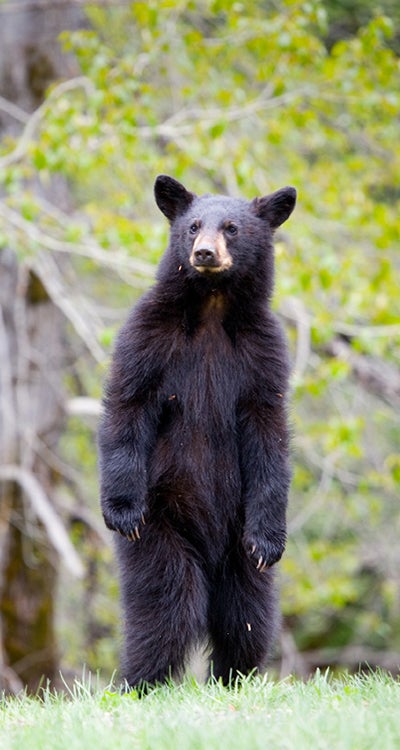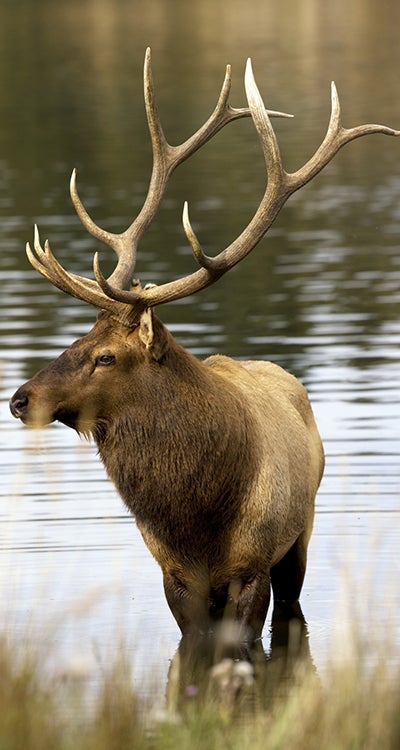Heading out the door? Read this article on the new Outside+ app available now on iOS devices for members! Download the app.

Photo by IStockphoto.com

Photo by IStockphoto.com

Photo by IStockphoto.com
1
Rocky Top
Great Smoky Mountains National Park, NC/TN
You won’t find any bears in the Nashville Zoo, but an estimated 1,500 call the national park next door home. Black bears spend September foraging in preparation for hibernation, and some as big as 600 pounds have been seen in the meadows and trees of 5,440-foot Rocky Top, a knob where the bruins feast on blueberries, raspberries, mountain cranberries, acorns, and insects. Set aside eight hours for this 13.9-mile out-and-back, and link the Anthony Creek, Bote Mountain, Appalachian, and Thunderhead Mountain Trails from the Cades Cove Picnic Area, 45 miles south of Knoxville. Scan for bears among the blueberry and mountain cranberry bushes immediately after the Bote Mountain/AT junction and on Rocky Top, a sub-peak of 5,527-foot Thunderhead Mountain (don’t forget to check the trees). Remember to stay a legal distance of at least 150 feet away and carry bear spray. Trip databit.ly/CadesCoveGSMNP
2
Tolleston Dunes Trail
Indiana Dunes National Lakeshore, IN
Double-crested cormorants, great blue herons, great white pelicans, bald eagles, osprey, sandhill cranes, ruby-throated hummingbirds. This hero list reads like something you might check off over years, not hours, but with quiet footsteps and a little luck, you might glimpse them all on a single, 2.6-mile lollipop loop on the southern tip of Lake Michigan, 55 miles east of Chicago. This area hosts more than 350 bird species (by comparison, Yellowstone has 300), and you can see many of them in September during their southward migration. Plan for about four hours for this easy walk (you’ll be stopping to spy birds often), and don’t forget binocs and a birding guide. Take off from the Tolleston Dunes trailhead, and scan for great horned and barred owls in the black oak savannas near mile .5 (greatest activity at dawn and dusk). Keep an eye out for hummingbirds hovering near red azaleas and pepperbush. Scan the marsh (mile .8) for herons and belted kingfishers, while the sandhill cranes and birds of prey—ospreys, bald eagles, red-tailed hawks, peregrine falcons—coast on thermals (the canopy opens near mile 1.5). Trip databit.ly/TollDunes
3
Coney Flats
Indian Peaks Wilderness, CO
You could sit in a traffic jam for a chance to glimpse roadside elk in Rocky Mountain National Park. Or, you could head into the neighboring Indian Peaks Wilderness on a 10.1-mile out-and-back through meadows where the ungulates often graze far from cars and crowds (peak activity during twilight). Allow seven hours and aim for peak mating season, typically the third week in September, when the bulls will bugle, rub their antlers on trees, and butt heads. From the Mitchell Lake trailhead, 55 miles northwest of Denver, follow the wooded Beaver Creek Trail (#911) 5 miles north over a pass to Coney Flats, a low-lying, marshy area between Mt. Audubon and St. Vrain Mountain. Look for bulls sporting 4-foot-wide antlers in the flats (or listen for the high-pitched bugling). Trip databit.ly/BvrCrkTrl